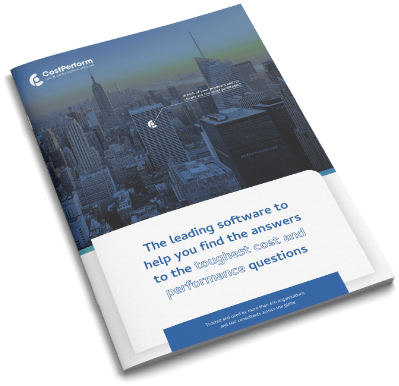The intersection of financial and management accounting often appears as a dichotomy. However, the recent PACE webinar by Sander den Hartog and Lim Vermeer highlighted the collaborative potential of financial and management accounting in cost modeling and decision-making.
This blog post explores their insights, and highlights how the United States Patent and Trademark Office (USPTO) effectively integrates these principles through advanced cost modeling techniques.
The Dichotomy of Accounting
Financial accounting provides a clear, regulatory-focused picture of an organization’s financial health. It’s backward-looking, relying on actuals to ensure transparency and compliance.
On the other hand, management accounting is designed for internal decision-making. It looks both backward and forward, using standards to provide detailed insights into operational efficiency and cost management.
The table below summarizes the key differences between financial and managerial accounting:
Issue | Financial Accounting | Management Accounting |
|---|---|---|
Principles | Revenue recognition, Historical cost, Matching | Causality (Cause and Effect), Analogy |
Perspective | Backward-looking, Specific time periods | Forward-looking, Continuum of operations |
Depreciation | Time or use based on historical costs | Capital preservation allowance based on replacement value |
Cost Objects | Usually products | Products, services, customers, channels |
Overhead Costs, like Sales, Marketing, HR | Identified at organizational level | Allocated as causality dictates |
Bridging the Gap with Cost Management Software
Advanced cost management software, like CostPerform, plays an important role in integrating financial and management accounting. By supporting various cost allocation methods, it offers a comprehensive platform for detailed cost and performance analysis.
CostPerform excels in handling complex data, providing actionable insights that enhance cost transparency and efficiency.
The Integration of Actuals and Standards
One of the most significant advantages of integrating financial and management accounting is the ability to use actuals for management purposes. Actual financial data not only informs regulatory compliance but also serves as a basis for deriving standards for future planning and decision-making. This dual use enriches the quality of managerial insights, aligning financial accuracy with strategic goals.
Case Study: USPTO’s Journey with Cost Modeling
The USPTO provides a compelling case study of this integration. With over 14,000 employees and an annual budget of approximately $4.2 billion, the USPTO manages critical functions such as granting patents and registering trademarks while ensuring budget neutrality.
From SAP to CostPerform
USPTO’s journey began with SAP and transitioned to CostPerform in 2015. This shift was driven by the need for a more dynamic and comprehensive cost management tool. CostPerform has proven to be a vital asset, supporting USPTO’s goals and regulatory requirements effectively.
Structure and Interconnected Models
USPTO employs multiple cost models for its various organizational units, including the CIO, CFO, and CAO offices, as well as direct customer-facing models for patents and trademarks. These models are interconnected, allowing for seamless cost allocation across different units.
For example, IT costs from the CIO office are allocated to other departments based on their usage, ensuring a clear understanding of cost distribution and consumption.
Automation of Cost Modeling
The cost modeling process at USPTO is highly automated, significantly reducing the time required for data collection and analysis. Cost modeling automation enables USPTO to conduct quarterly reviews, providing timely insights into their cost structures and allowing for swift corrective actions when needed.
Achieving Maturity and Predictive Cost Modeling
Over the years, USPTO has reached a high level of maturity in its cost modeling practices. The organization is now advancing towards predictive modeling, leveraging historical data to forecast future costs and activities. This evolution allows USPTO to anticipate changes and make informed decisions, enhancing their operational efficiency and strategic planning.
Costing vs. Pricing: A Crucial Distinction
As Lim Vermeer aptly stated, “Costing is a fact, pricing is a choice.” This principle underscores the difference between determining the cost of a product or service and deciding its selling price. While costing provides a factual basis, pricing involves strategic decisions based on market conditions and organizational goals.
This principle highlights how actual financial data serves as a foundation for cost determination. To further illustrate the process of deriving costs from actuals, here is a visual representation from the webinar:

Leveraging the Synergy between Financial and Management Accounting
The USPTO case study underscores the transformative potential of integrating financial and management accounting, facilitated by advanced cost calculation software like CostPerform. This integration not only enhances transparency and efficiency but also empowers organizations to make informed, strategic decisions. By leveraging data through sophisticated modeling techniques, organizations can maintain a competitive edge and drive sustainable growth.
With increasing data availability, blending financial accuracy with strategic foresight becomes fundamental. The synergy between financial and management accounting, supported by robust software solutions, forms the cornerstone of efficient, forward-looking financial management.
